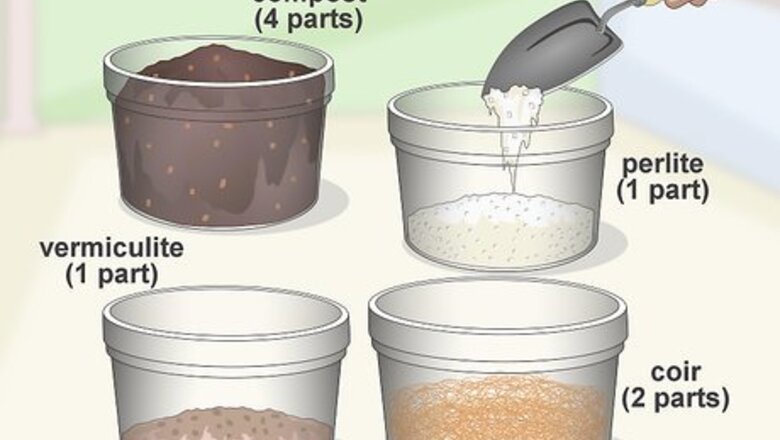
views
Creating Basic Seed Starter Mix
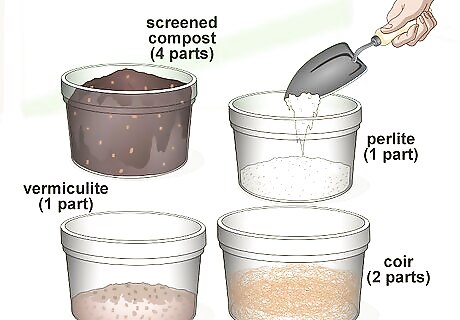
Measure the ingredients. For a basic seed starting mix, you'll need 4 parts screened compost, 1 part perlite, 1 part vermiculite, and 2 parts coir. When you measure the ingredients, though, keep them in separate containers for the moment. Compost helps the soil retain moisture and provides nutrients. Perlite is a volcanic mineral that helps improve drainage and insulates plant roots when there are changes in the temperature. Vermiculite contains minerals that help the soil retain moisture and nutrients. It can also help improve drainage. Coir is coconut fiber, and serves as a light, well-draining growth medium for seeds. You can find these ingredients at most garden supply stores.
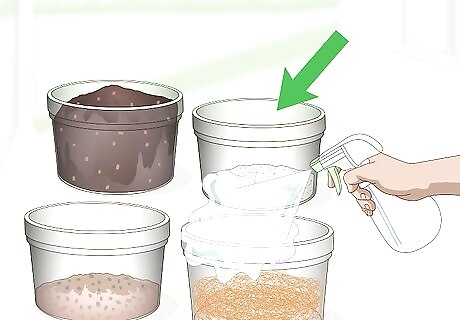
Moisten each of the ingredients lightly. When you mix the compost, perlite, vermiculite, and coir together, you’ll kick up a lot of dust if you don’t wet them slightly first. While they're still separated, lightly mist each with a garden hose so they’re moist but not soaked.
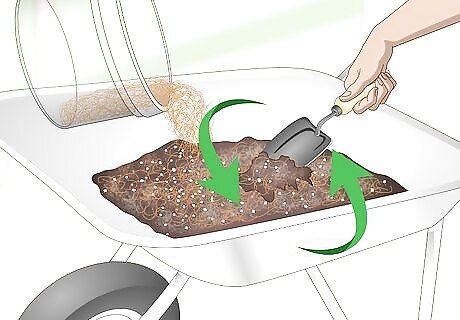
Mix all of the ingredients. Add the moistened compost, perlite, vermiculite, and coir to a wheelbarrow, dishpan, or large bucket. Use your hands or a shovel to stir the ingredients together until they’re well blended.
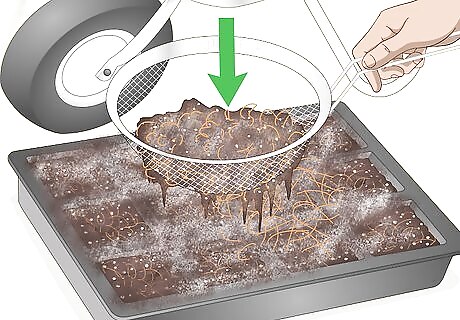
Add the mix to seed cells. Seed cells or flats are an inexpensive container for starting plants. Fill the cells to the top with the seed starter. You can use a sieve or sifter to pour the seed starter into the container if you like.
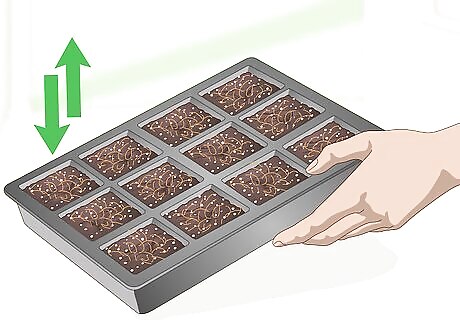
Settle and level the mix in the containers. Tap the seed cells against a flat surface to settle the starter mix. Next, press down on the top of the starter with your hand to compact it, and then plant the seeds as you normally would.
Making High Energy Requirement Seed Starter
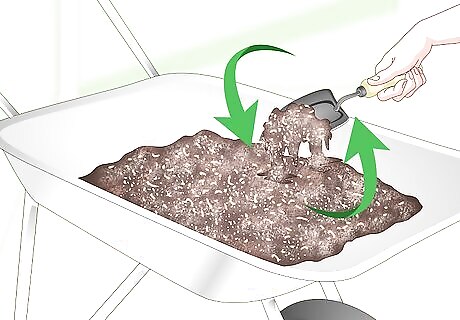
Combine all of the ingredients. Add 4 parts of peat moss, 3 parts of compost, and 3 parts garden soil or sand to a wheelbarrow or bucket. Use a shovel to blend the ingredients together until they’re well mixed. Peat moss helps improve the soil’s aeration and retains moisture. You can substitute coco peat for peat moss if you like. Compost helps keep moisture and nutrients in the soil. Garden soil contains nutrients, while sand helps improve drainage. These are available at garden supply and home improvement stores.
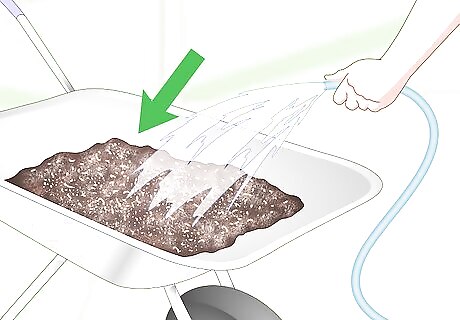
Moisten the mixture evenly. Once the ingredients are mixed, use a garden house to lightly spray the mixture with water. Use the shovel to mix the ingredients together again to distribute the moisture evenly. When you wet it, the seed starter should be evenly moist but not overly saturated.
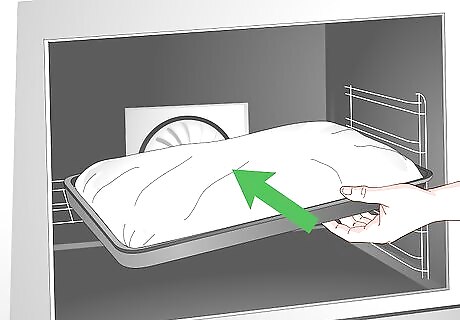
Sterilize the mixture by heating it in the oven. Place the seed starter mixture in a heat-resistant pan or other container, and cover it with a piece of foil. Heat it in a 250°F (130°C) oven until its temperature reaches 180°F (82°C). Let it heat for another 30 minutes after it reaches the proper temperature. You can use a candy or meat thermometer to monitor the mixture’s temperature. Sterilizing the seed starter ensures that it’s free of diseases.
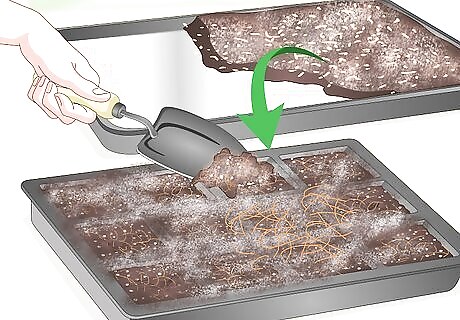
Put some of the seed starter in your containers. After you’ve sterilized the seed starter mixture, allow it to cool for 5 to 10 minutes. When it’s cool enough to handle, fill your chosen container(s) with the mixture all the way to the top.

Compact the starter mix for planting. Level the mix by tapping your container(s) against your work surface. Next, compact the mix slightly with your hand by pressing down on it before adding the seeds.
Preparing Seed Starter for Dry Climates
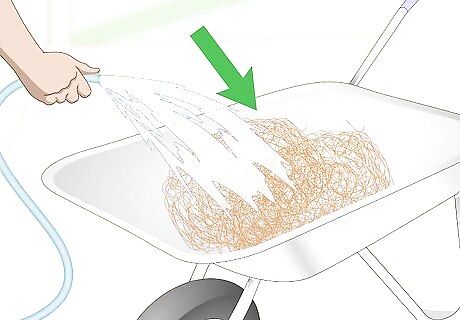
Moisten the coir. You’ll need 8 parts of coir, which is coconut fiber that helps the mixture drain well. Place the coir in a wheelbarrow and lightly mist it with a garden hose to moisten it. Coir is available at most garden supply stores. You can substitute peat moss for the coir, but you should add ¼ teaspoon (5 g) of garden lime per gallon if you do to adjust the pH properly.
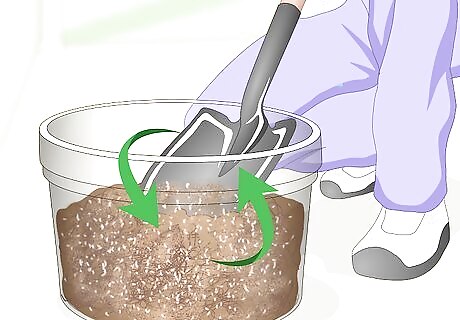
Mix all of the ingredients together. Once the coir is moistened, dump it into a large bucket. Add 1 part vermiculite and 1 part perlite, and use a shovel to blend all of the ingredients together fully. Vermiculite helps the seed starter maintain its moisture and nutrient levels. Perlite comes from volcanic mineral and helps improve soil drainage. The ingredients are available at garden supply stores.
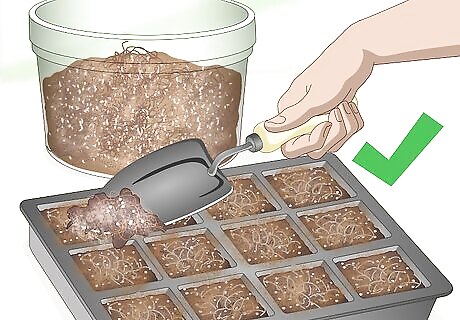
Fill your seed flat. Add the seed starter to your seed flat or other container, making sure that it’s filled to the brim. Tap the container against a flat surface to settle the soil, and then compact it lightly with your hand before adding the seeds.
















Comments
0 comment